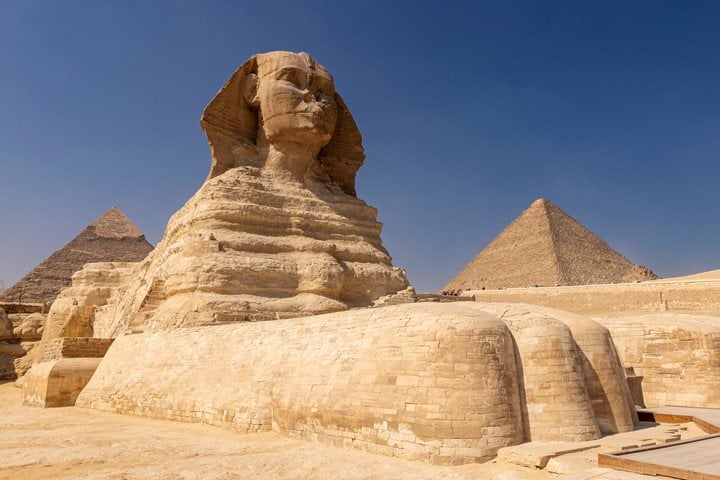The Great Pyramids of Giza. The Sphinx. Karnak Temple. Mention Egypt and these are the boldface names that immediately come to mind. And while these iconic sites are must-see stops on any Egyptian voyage, there are other extraordinary, lesser-known treasures not to be missed. Here are five our experts recommend.
The Tomb of Nefertari
The final resting place of the wife of Ramses II is truly fit for a queen. Discovered in 1904 by Italian archaeologist Ernesto Schiaparelli, the tomb is adorned with intricate paintings that surpass many other pharaonic works of art in their beauty and sophistication. With special permission, you can walk through the multiple chambers and marvel as the story of her journey to the underworld, where she was united with Osiris, unfurls through the brilliant hieroglyphics, so vivid and fresh it’s as if they were painted yesterday.
The relief of Akhenaten at the Egyptian Museum
This depiction of the pharaoh formerly known as Amenhotep IV represents one of the most significant turning points in Egyptian art and culture. When Amenhotep’s rule began in 1353 BCE, he not only changed his name to Akhenaten (a nod to the sun god Aten) but he ushered in a new form of art. More fluid, natural looking portrayals of people replaced unrealistic human proportions and rigidity, while a singular focus on Aten ousted the typical pantheon of gods. There was also a new emphasis on familial affection—the pharaoh was shown as a kind father actively playing with his children. Much of the art was destroyed from this period as they rapidly shifted back to the traditional ways after Akhenaten’s death, making the few surviving artifacts, like this relief, particularly important.
The view from the Old Cataract Hotel in Aswan
Winston Churchill, Agatha Christie, Princess Diana, and Howard Carter are just a few of the legendary guests who have checked in to the majestic Old Cataract Hotel, which is perched on a pink granite cliff in the Nubian Desert. However, the true star here is the epic view. Head for the elegant terrace to enjoy high tea or sunset cocktails al fresco as you take in one of the most stunning panoramic scenes of the Nile complete with rocky islands, feluccas sailing by, and desert mountains rising from the opposite riverbank.
Tutankhamun's tomb in the Valley of Kings
You may have seen the treasures of King Tut in a museum, but nothing can compare to seeing his mummy in the tomb where it was discovered nearly 100 years ago. With special access, you can descend into the burial chamber to see the final resting place of the youngest pharaoh to ever rule Egypt. His body once sat in a series of nested containers, including three golden coffins and a granite sarcophagus, but today it’s protected by a climate-controlled glass box. In 2019, a decade-long restoration was finally completed so you’ll see Tut’s crypt—the only Ancient Egyptian royal tomb ever found intact—returned to its ancient splendor.
The unfinished obelisk at Aswan
For up-close insight into the genius of Egyptian engineering look no further than the 3,500-year-old obelisk which lies unfinished in a bed of Aswan’s famous pink granite. At 137 feet high and almost 1,200 tons, if completed it would have been one-third larger than any previously erected monument of its kind. Unfortunately, that overzealous goal likely led to the huge crack that left the obelisk forever abandoned in the quarry. Now an open-air museum, the site sheds light on the tremendous effort and sophisticated techniques that went into carving and transporting these mammoth structures.




